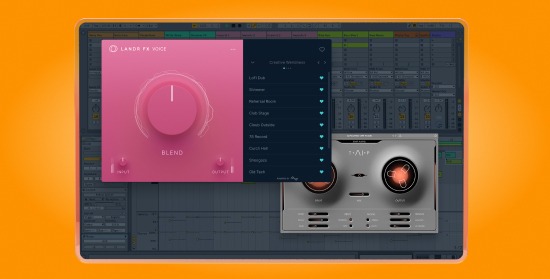
Hard Truths: A Good Mix Takes Work

Welcome to Hard Truths, the series on the LANDR Blog where we cut through the noise and take on a harsh reality from the world of music production. This is the advice you might not want to hear—but will make you a better producer.
Sometimes everything is going smoothly in a session and your process feels effortless. Unfortunately, this isn’t always the case.
We want mixing to be easy and satisfying and fun—and sometimes it is! But any pro mix engineer can tell you that the bulk of their time is spent on difficult and challenging tasks.
I’ll get straight to today’s hard truth: getting a good mix is hard work.
That doesn’t mean there aren’t ways to make your life easier as you mix. But if you’re not prepared to put in the effort your results will never measure up.
It’s not meant to be discouraging.
The flip side of this hard truth is that you can improve the sound of your basic tracks by a large margin if you simply put in the time to do everything you can.
Here’s how to do it.
Sweat the details
It might seem tedious, but spending time on the fine details of your tracks always pays off.
It might seem tedious, but spending time on the fine details of your tracks always pays off.
I’m talking about basic tasks like comping vocals, checking edits, fine-tuning automation and keeping good gain structure.
Strictly speaking these might not all be mixing tasks, but they make a big difference in your mix.
1. Cleaning up
Bad edits or poorly comped tracks can break the immersion of a compelling vocal performance.
Excess noise, clicks and pops and any other artifacts from the tracking process need to be dealt with for your basic tracks to sound their best.
The worst part? Mix operations that affect dynamic range almost always increase the negative effects from these artifacts.
That means every time you apply compression or limiting you’ll be boosting the noise floor of your raw material. If there’s excess noise, you’ll hear it all—especially after mastering.
It’s a lot of effort to make sure every single track in your session is scrubbed perfectly clean for mixing, but it’s worth it.
It’s a lot of effort to make sure every single track in your session is scrubbed perfectly clean for mixing, but it’s worth it.
Making this little bit of effort goes a long way!
2. Automation
Automation can be a similar sticking point. Individually adjusting dozens of breakpoints a dB or two at a time is tedious.
But it makes a difference. There’s only so much a compressor can even out your levels before it starts working too hard.
Taking the time to do passes of level automation for very dynamic sources can give you better results from your plugins.
Don’t miss this opportunity to get more from your mix just because it’s time consuming.
3. Gain staging
In the heat of the moment you might find yourself losing track of your gain structure.
As your insert chains get longer and more complex, you’re bound to forget to check your meters and adjust makeup gain accordingly.
But getting stuck with hot levels at the mix bus can make a big impact. Not enough headroom is one of the main mix errors we see in tracks uploaded to LANDR.
If you don’t take the extra time to check gain structure as you go, reigning your levels back in at the end might change how your plugins interact with each other—and change your mix.
Do your best to keep an eye on headroom throughout your mix process.
Do your best to keep an eye on headroom throughout your mix process.
Front load your labour
With all that in mind, efficient engineers do everything they can to reduce the amount of time they spend dealing with mix difficulties.
The best way to do that is to start before the mix process even begins.
Staying vigilant during a session and catching mistakes as they occur takes concentration, but do your best.
Resist the urge to put off dealing with issues in the moment—even if they interrupt the action of the session.
Patching up problems later with less than ideal solutions shows through in your final product.
Patching up problems later with less than ideal solutions shows through in your final product.
And if something went seriously wrong, you may even be forced to re-record. That will double your work anyway!
Make templates
Preventing issues before they happen is important. But what about workflow enhancements you can use during the mix process?
One helpful option is to build a set of mix templates.
Mix templates are a touchy subject. Some engineers swear by them, others say they’re not so useful.
There may not be consensus in the pro audio community, but templates can simplify some of your workflow.
Any repeatable actions in your mixes can be added to a time-saving template you can recall in any situation.
Most engineers stop short of using templates for individual channels, but if you find yourself using the same EQ and compressor on kick drum for every mix, why not!?
Behind the curtain
It might seem like all this extra work makes mixing completely unglamorous. But here’s a related truth—the more effortless it sounds, the harder it was to pull off.
Artists, engineers and producers want you to think their results are the product of pure musical intuition.
More often, you’re hearing a calculated approach that took some amount of trial and error to perfect.
A prime example is the “lo-fi” sounds that are sometimes used for effect even in big budget productions.
It may seem at first like the engineer simply dropped in a verse from the artist’s rough demo to capture the “raw” feel of a first take.
In reality these lo-fi tones are often among the most extensively processed sound in a mix.
It takes a lot of mixing finesse to get these textures to actually work the way they’re intended.
One thing’s for sure—it’s definitely not an unedited, dry phone mic take!
Be prepared for creative, unconventional approaches to be more challenging than tried and true techniques.
But don’t let that stop you. Just like any innovation, you only ever see the tip of the iceberg!
Gear guides, tips, tutorials, inspiration and more—delivered weekly.
Keep up with the LANDR Blog.




